150 years after Marie Curie’s birth, Mike Sutton delves into her life and research
When Maria Skłodowska was born, 150 years ago this month, her homeland had long since ceased to be an independent sovereign state. During the previous century, Russia had annexed most of Poland’s territory, with the rest divided between Prussia and Austria. At Maria’s school in Warsaw, all teaching was in Russian and the Polish language was banned.

Determined to study, despite a higher education system that did not admit women, Maria joined a group of dissident intellectuals who ran a clandestine educational organisation known as the floating (or flying) university. But to pursue the scientific career she dreamed of she needed to leave Poland. In Paris, she encountered further difficulties. In theory, the French academic world was open to anyone with sufficient talent. But as a foreigner, and a woman, she struggled to win recognition.
Eventually Maria would of course receive the highest recognition in the form of two Nobel prizes. The first (for physics) was shared with her husband Pierre and with the French physicist Henri Becquerel. The second (for chemistry) was hers alone. Despite the reflected glory that these achievements brought to her adopted country, the French Academy of Sciences still declined to admit her as a member, and right-wing Parisian newspapers targeted her with xenophobic attacks.
The early years
Maria’s family – like many others in the Polish professional classes – had slipped down the social scale because of their opposition to Russian rule. Her father, Wladyslaw Skłodowski, was excluded from higher-level academic posts and had to supplement his schoolteacher’s salary by opening his house to boarders. Her mother Bronisłava, also a schoolteacher, died of tuberculosis in 1878.
The Skłodowski children grew up surrounded by books and exposed to intellectual debate. Maria left school in 1883 with a gold medal for outstanding academic achievement and a desire to continue her studies.
’From time to time a little unhoped-for success would come to encourage me, and at other times I sank into despair because of the accidents or failures due to my inexperience’
From Madame Curie
Since women were excluded from formal higher education in Russian Poland, she turned to Warsaw’s underground floating university. Its classes were generally held in private homes, but it had a science laboratory concealed inside the Museum of Industry and Agriculture. This makeshift lab – managed by a cousin of Maria’s who had previously worked as an assistant to Dmitri Mendeleev in St Petersburg – gave Maria some experience in practical physics and chemistry. According to the 1938 biography Madame Curie, authored by her daughter Eve, she later recalled: ‘I could generally get there only in the evening after dinner or on Sunday, and I was left to myself. I tried to reproduce various experiments described in the treatises on physics or chemistry, and the results were sometimes unexpected. From time to time a little unhoped-for success would come to encourage me, and at other times I sank into despair because of the accidents or failures due to my inexperience.’
Maria’s elder sister Bronia also had academic ambitions. In 1886, Maria put her own career plans on hold, taking a post as a governess to help fund her sister’s medical studies in Paris. Five more years passed before Maria followed her. By then her sister was newly-qualified, and also married – to Kazimierz Dłuski, another expatriate Polish physician.
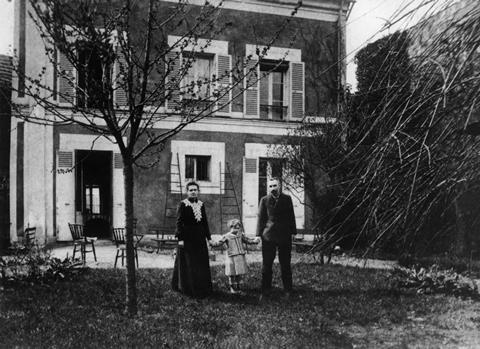
Finding a suitable match
The Dluskis welcomed Maria into their apartment on the fashionable right bank of the Seine, but soon after arriving she crossed the river to rent a tiny attic room in the Latin Quarter, close to the Sorbonne – the venerable centre of the University of Paris. On a meagre diet, and with little heating in winter, Maria undertook an intensive programme of study at the university. In 1893, she topped her class in physics, and in 1894 she came second in mathematics. In the same year, France’s Society for the Encouragement of National Industry offered her a routine research project which involved measuring the magnetic properties of various types of steel.
Unfortunately, the facilities allocated for this task proved inadequate. Moreover, Maria’s supervisor expected extra help from her in exchange for access to his laboratory. Growing tired of cataloguing the professor’s mineral collection and performing his routine analyses, she asked a Polish acquaintance if he knew anyone who might offer her some bench space on easier terms. He did: Pierre Curie, a lecturer at the National School of Physics and Chemistry.
Born in 1859 and still a bachelor in his mid-30s, Pierre seemed wedded to his research. When he encountered Maria in April 1894 he had already published important work on the phenomenon of piezoelectricity, but had not yet submitted his doctoral thesis. Only a few weeks after their first meeting, Pierre asked Maria to become his wife. She postponed giving her answer until after she had spent the summer vacation with her family in Poland, but accepted his proposal on returning to her studies in the autumn.
In July 1895, Mademoiselle Maria Skłodowska became Madame Marie Curie. In the same year, Pierre finally gained his doctorate and was appointed a full professor at the National School. After her graduation in 1896, Marie assisted Pierre in his laboratory work while seeking a topic for her own doctoral research – a project only temporarily interrupted by the birth of their daughter Irène in September 1897. By the end of that year Marie had begun an investigation that would earn her an international reputation.
Uncovering new elements
In November 1895, the German physicist Wilhelm Röntgen had discovered x-rays, and a few months later the French physicist Becquerel became the first person to detect radioactivity. Both these phenomena have the effect of ionising air, and thus increasing its electrical conductivity. Late in 1897, the Curies began comparing the radioactivity of various substances by measuring the conductivity of the air around them, using an instrument for measuring very weak electric currents developed some years earlier by Pierre and his brother Jacques.
As Marie eventually discovered, a ton of pitchblende contains less than a gram of the highly radioactive material she was seeking
These investigations revealed that only minerals containing uranium – Becquerel’s original source – or thorium showed traces of radioactivity. (The thorium result was independently confirmed by Gerhardt Schmidt.) However, the Curies noticed that pitchblende, a uranium ore from Joachimsthal in Bohemia, was more intensely radioactive than pure uranium. They concluded that it must contain one or more new radioactive elements, and it was agreed that identifying them should become Marie’s doctoral project.
As Marie eventually discovered, a ton of pitchblende contains less than a gram of the highly radioactive material she sought. Extraction on this scale required considerable physical effort as well as chemical expertise. Much of this work was done by Marie herself, in a decrepit shed with limited facilities. First, the ore had to be ground to powder and steeped in acid, producing a solution which could then be subjected to the standard group analysis tests. The radioactivity levels of the resulting precipitates indicated the chemical families to which the unknown elements belonged.
Marie’s analyses suggested the presence of two new elements, one of them precipitated along with bismuth, the other with barium. To honour her native country, Marie named the first of these polonium when she and Pierre announced its discovery in July 1898. She had too little of it for the pure metal to be isolated, as even a ton of pitchblende contains only 0.1mg of polonium. However, a distinctive line – not attributable to bismuth – was later detected in the precipitate’s emission spectrum. This line faded, and eventually vanished, as the polonium in the sample decayed. (Polonium’s half-life was later found to be about 140 days.)
The Curies announced the discovery of a second new element, radium, in December 1898. Although it was more plentiful than polonium and had a longer half-life, isolating it proved extremely difficult. After boiling powdered pitchblende with sulfuric acid, Marie eventually obtained a very weak solution of radium sulfate from the resulting mixture. Adding barium chloride solution to this caused – as would be expected – the precipitation of barium sulfate. But radioactivity measurements indicated that a significant amount of radium sulfate was co-precipitated with it. Later research showed that radium and barium sulfates are isomorphous, and that radium ions can replace some of the barium ions in the sulfate crystal lattice.
Marie confirmed the existence of this new element by converting the mixed sulfate precipitate to a chloride solution, and then separating the radium chloride from its barium analogue by a lengthy series of fractional crystallisations. After much labour (and at considerable risk to her health) she was able to produce small samples of relatively pure radium salts, which had the astonishing property of glowing in the dark. Explaining the source of that spontaneous outflow of energy required a paradigm shift for both physicists and chemists.
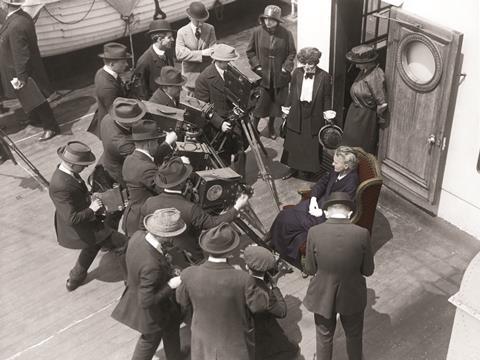
A Nobel woman
The Curies’ publications attracted considerable interest from the scientific world, but it took some time for this to have a material effect on their careers. In 1903, however, London’s Royal Society awarded them its Davy Medal, and later that year the couple shared the Nobel prize in physics with Becquerel. In 1904, Pierre became a professor at the Sorbonne, and Marie – her doctorate successfully completed – was appointed to an official university post as his assistant. In the same year, Eve was born. All seemed to be going well for them, but then in 1906 Pierre was killed in a traffic accident.
Marie declined the widow’s pension that the university offered her, as she wished to continue working. In response, the faculty unanimously agreed to appoint her to Pierre’s vacant chair, making her the Sorbonne’s first female professor. Thereafter, she made further significant contributions to radiochemistry – a subject that attracted greater academic interest (and support from medical charities) as the use of radiotherapy for treating certain types of cancer began to be explored.
Marie’s example has inspired legions of female science students all over the world
In 1910, Marie and her assistant André Debierne isolated metallic radium. They accomplished this by electrolysing radium chloride with a mercury cathode and distilling off the mercury from the resulting amalgam under an atmosphere of hydrogen. For this, and numerous other achievements, Marie received the chemistry Nobel prize in 1911. In the same year, however, the French Academy of Sciences declined to elect her as a member, after supporters of a rival candidate for admission sponsored a campaign of xenophobic attacks against her in the right-wing press.
When the first world war began in 1914, Marie soon demonstrated her patriotism. Besides running radiology training courses for doctors and nurses, she also organised a mobile x-ray team which could work in field hospitals close to the front line. She assisted with the treatment herself, and even learned to drive an ambulance. As a result of this service Marie was elected to France’s Academy of Medicine in 1920, though the Academy of Sciences remained closed to her. The Academy did not admit its first women as full members until the 1970s.
In the 1920s, Marie headed the Curie Foundation, a charitable trust sponsoring research into medical applications of radioactivity. She also served as vice-president of the League of Nations’ International Commission on Intellectual Cooperation. Meanwhile her health deteriorated, as a result of her prolonged exposure to radiation at a time when its dangers were poorly understood and safety precautions were rudimentary. She died in 1934. The following year her eldest daughter and son-in-law, Irène and Frédéric Joliot-Curie, shared the chemistry Nobel prize for their work on artificially created radioactive isotopes.
Marie’s example has inspired legions of science students all over the world. In the UK, her name remains prominent through the work of Marie Curie Cancer Care, a charity which has given home support and hospice care to thousands of sufferers since 1948.
Today, when hostility towards immigration has become a substantial political force in many countries, Marie’s story also offers a salutary reminder that migrants can bring valuable gifts to their host nations. However, it is a tragic irony that the name of polonium – the element she called after her homeland when it was still a province of the Russian empire – has become familiar to millions through its use in the assassination of the Russian exile Alexander Litvinenko in 2006.
Mike Sutton is a historian of science based in Newcastle, UK
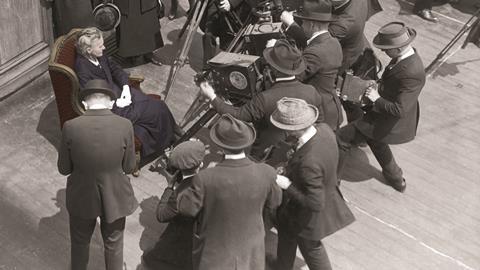
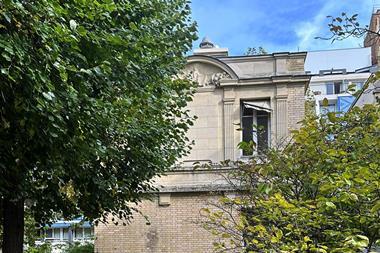

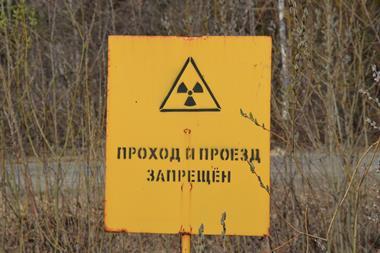









No comments yet